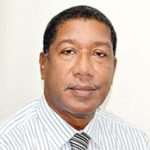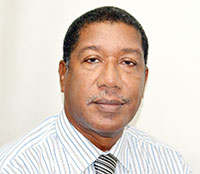An important part of a dental examination is measuring the patient’s normal range of motion in the muscles of the head and neck. We start with measuring the maximum range of the opening of the mouth, but we also measure the extension and flexion of the head and neck muscles. There is a normal or average range of opening of the mouth for a man and a woman. Generally, the mouth should be able to open sufficiently to allow the width of a tablespoon to be placed between the upper and lower central incisors.If a patient cannot open his or her mouth that wide, there is usually an underlying issue, either in the muscles or the temporo-mandibular joint (TMJ) itself. Know that malocclusion (“bad bite”), premature contacts of teeth, spasms in jaw muscles, and TMJ disease can all trigger the pain of migraines and/or headaches. The treatment of your migraine or headaches might lie in the hands of your dentist, but it is possible that you are still totally unaware of this. Indeed these commonly arise from an underlying craniodental disharmony. If you go to many hospitals in the United States complaining of severe headaches, they first refer you to a dentist for him or her to eliminate the possibility of the mentioned disharmony.
When dentists do come to that conclusion, we control the pain by reducing inflammation of the TMJ. Dentists do this by helping the patient control the parafunctional habit causing the inflammation, all the while making sure each patient’s airway is maintained. You see, airway obstruction, that is sleep apnea, is frequently connected to teeth grinding.
Pain in the neck or shoulders, and even arms can be triggered by tempero-mandibular disease (TMD). Based on the results of several diagnostic tests, including some motor flex and nerve tests, dentists can decide if the origin of the pain is primary, that is, if it is originating from the dento-facial complex, or if it is secondary. In the latter case, the dentist will refer the patient to the relevant physician. Knowing the cause of the pain allows dentists to render treatment customised to each patient and his or her origin of the pain.
Patients with secondary issues benefit from symptomatic treatment, like night time appliances (bite guards) that prevent grinding and clenching. Sometimes medications are utilised. Besides using flex tests, dentists can also have the patient bite with variable force on sheets of wax which can indicate pressure-mapping. It shows where a patient’s teeth contact first and how much is the relative pressure. This allows the practitioner to see where to adjust or remove the premature contact in the patient’s mouth.
After diagnosing a patient, usually a dentist fits a rehabilitative orthotic for that patient to wear for a certain period of time. During that period, the dentist provides the patient adjunctive physical therapy. The orthotic prevents grinding of teeth, while the adjunctive physical therapy allows the muscles to relax and the TMJ to reposition. In that way, there is no longer any pressure or irritation to the nerves surrounding the TMJ. Remember, pain in any area where there are muscles causes those muscles to contract involuntarily.
Written By Dr. BERTRAND R. STUART D.D.S
THE DENTIST ADVISES : Migraine or headaches treatment might lie in the hands of the dentist
SHARE THIS ARTICLE :
Facebook
Twitter
WhatsApp



.jpg)








